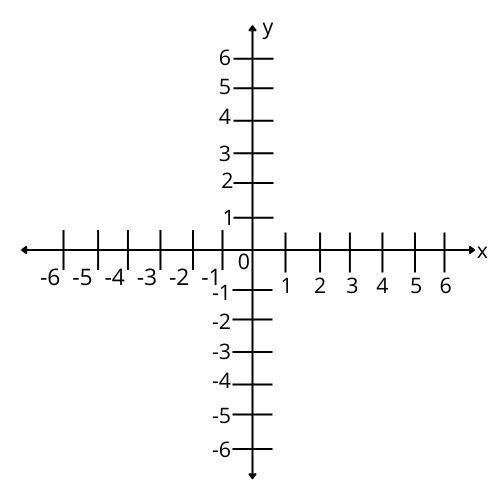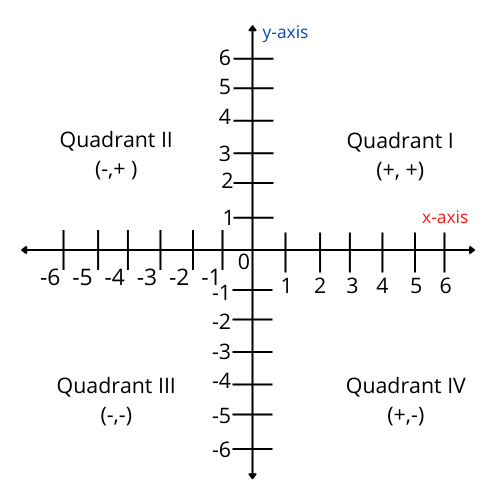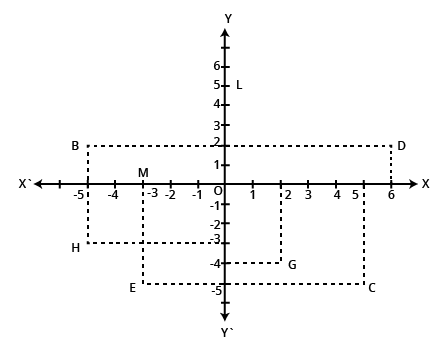NCERT Solutions for Maths Class 9 Chapter 3 Coordinate Geometry Exercise 3.2 - FREE PDF Download
FAQs on NCERT Solutions for Class 9 Maths Chapter 3 Coordinate Geometry Ex 3.2
1. What are the parts of the cartesian plane in class 9th exercise 3.2?
This particular exercise has in-depth knowledge about the cartesian plane. This exercise basically focuses on the four main quadrants that are formed from the two lines intersecting each other at right angles. Points on the cartesian planes are known as ORDERED PAIR.
2. Explain the abscissa and ordinate in cartesian plane?
The abscissa is the formal term used for the point marked by making a perpendicular from the y axis and measuring the length of the x axis. On the other hand, the point marked on y-the coordinate by drawing the y axis called ordinate. These are small laws which must be in mind for exercise 3.2 which are clearly explained in the vedantu ncert solutions class 9.
3. What are the sectors of the cartesian system?
These four quadrants represent a full set of coordinates including the x and y axis. The importance of learning the system is that you will use it to plot the points and curve. In this exercise,solved by vedantu, there will be a full explanation of all the concepts of the cartesian system.
4. What is the need of practicing points plotted on the cartesian plane?
Since now you have solved plenty of linear equations, you should know while writing coordinates and mention the y axis. Closely studying about the cartesian plane you will get the vision of solving these questions.
5. Why opting for the NCERT solutions given by vedantu is considered a good option.
Vedantu is considered as a good option because there would be conceptual clarity in solving the questions of exercise 3.2. With the help of these solutions students can easily understand the pattern of questions that can be asked in the exam from this chapter and it will help them to score good marks.
6. How do you plot a point in the Cartesian Plane?
To plot a point (x, y) in the Cartesian Plane:
Start from the origin (0, 0).
Move x units along the x-axis (right for positive, left for negative).
Move y units along the y-axis (up for positive, down for negative).
Mark the point where you stop.
7. What is the significance of the origin in the Cartesian System?
The origin is the point where the x-axis and y-axis intersect, represented as (0, 0). It serves as the reference point for plotting all other points in the Cartesian Plane.
8. Why is the Cartesian System important in mathematics?
The Cartesian System is important because it provides a clear and precise way to represent and analyse geometric figures and relationships in a plane. It is fundamental for studying coordinate geometry, solving problems involving distances, midpoints, and slopes, and understanding various mathematical concepts. Maths Class 9 Chapter 3 Exercise 3.2 simply covers all those above topics for the students to understand it better.
9. How can I improve my skills in using the Cartesian System?
To improve your skills in using the Cartesian System, practice plotting points, identifying coordinates, and solving problems related to distances and midpoints. Regularly working through exercises and using graph paper to visualize the concepts can also be helpful.
10. Can the Cartesian System be used in three dimensions?
Yes, as we have studied in class 9 exercise 3.2 the Cartesian System can be extended to three dimensions by adding a third axis, the z-axis, which is perpendicular to both the x-axis and y-axis. Points in three-dimensional space are represented by ordered triples (x, y, z).



































